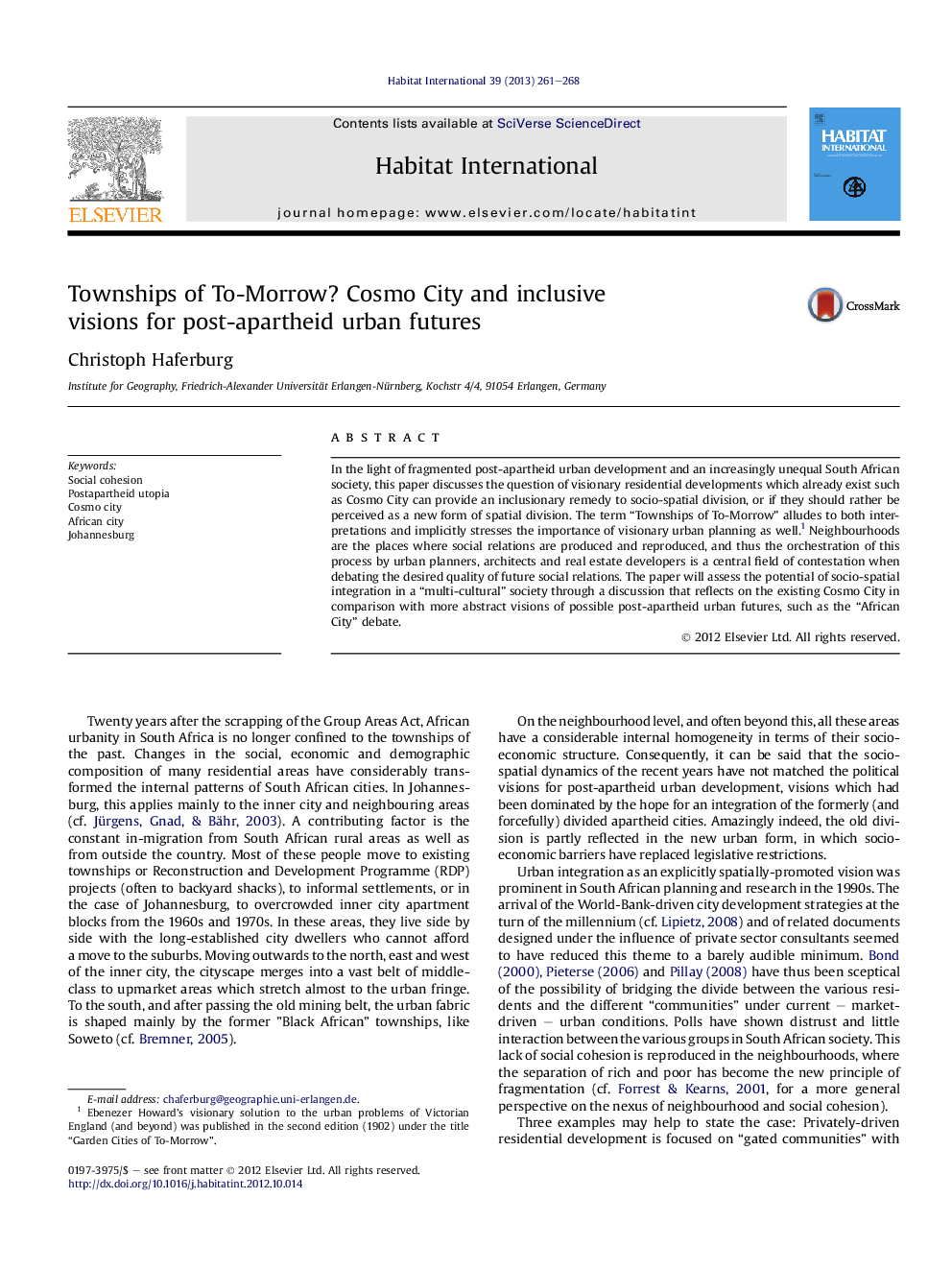| Article ID | Journal | Published Year | Pages | File Type |
|---|---|---|---|---|
| 1048246 | Habitat International | 2013 | 8 Pages |
In the light of fragmented post-apartheid urban development and an increasingly unequal South African society, this paper discusses the question of visionary residential developments which already exist such as Cosmo City can provide an inclusionary remedy to socio-spatial division, or if they should rather be perceived as a new form of spatial division. The term “Townships of To-Morrow” alludes to both interpretations and implicitly stresses the importance of visionary urban planning as well.1 Neighbourhoods are the places where social relations are produced and reproduced, and thus the orchestration of this process by urban planners, architects and real estate developers is a central field of contestation when debating the desired quality of future social relations. The paper will assess the potential of socio-spatial integration in a “multi-cultural” society through a discussion that reflects on the existing Cosmo City in comparison with more abstract visions of possible post-apartheid urban futures, such as the “African City” debate.
► The paper examines an existing model of “mixed” housing in South Africa. ► Can this model help to overcome inherited urban divisions? ► Current planning ideals (e.g. World Class City, African City) are examined. ► With the ideals as reference, the case study of Cosmo City is found to be wanting. ► However, the need to strive for integration via visionary planning is acknowledged.
